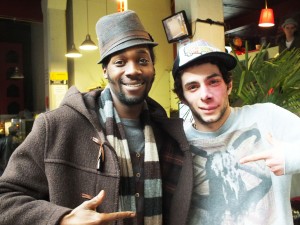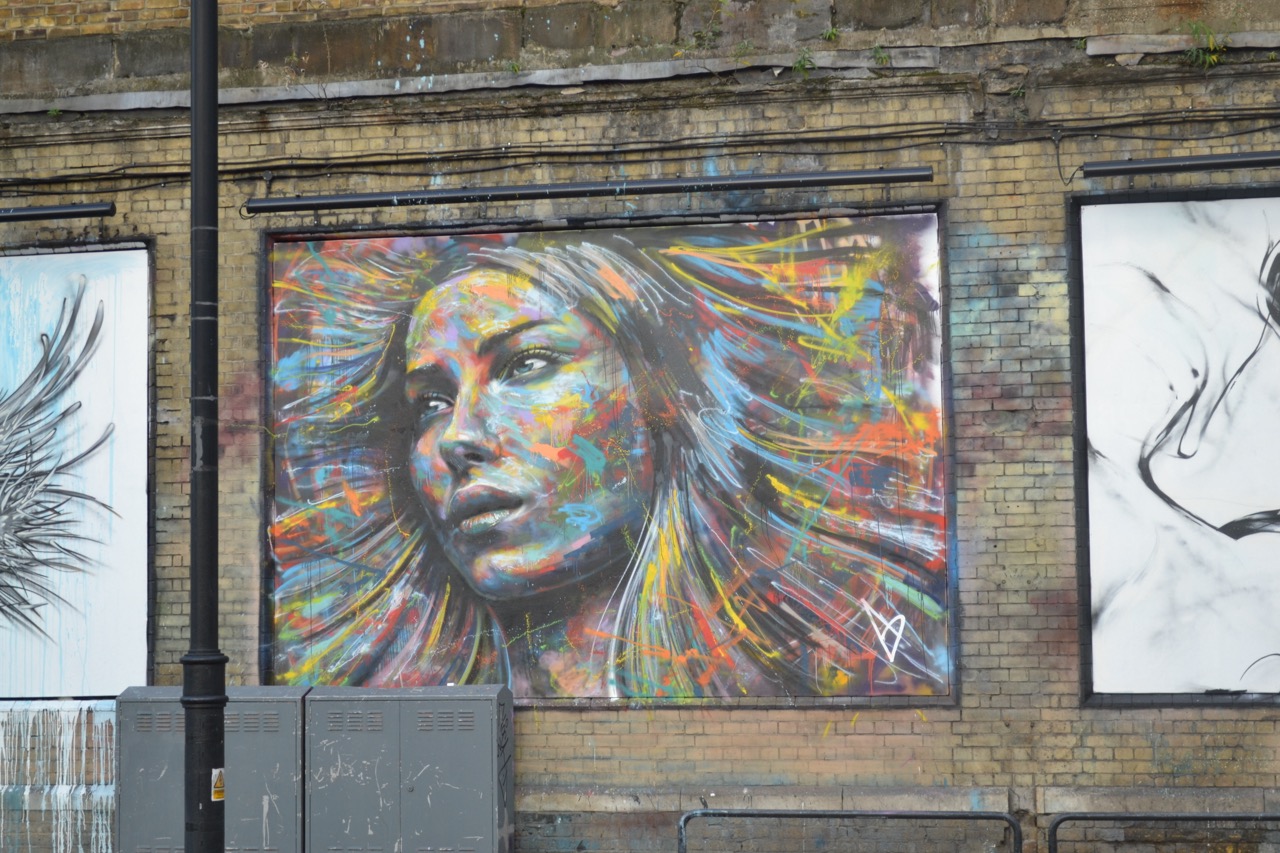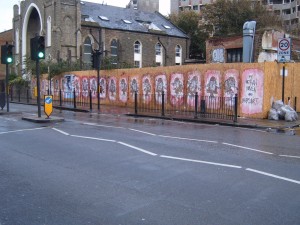Nathan Bowen is a London-based street artist running a movement called After Lives whose work was notably featured on The Apprentice in early 2012. He has greatly left his unique and phenomenal artistic style on the walls of London over the years and continues to amaze passers-by coming from all around the world.
Erhan Halil is the founder of MKRD Art, a platform made for street artists willing to collaborate with others and to sell their artworks. Nathan is a regular contributor to the MKRD Art cause.
They recently talked to us about their work…

Nathan, tell us a bit more about your After Lives movement.
Nathan Bowen: After Lives is artistic reincarnation; finding old run-down walls and transform them into brand new features of art, so out with the old, in with the new. I’m basically giving those walls a new life. That is my basis for my street art – it feels like I work as a vigilante; trying to clean the streets, get rid of the old rubbish tags, sad graffiti, and put up new stuff. You could say two wrongs don’t make a right, but I’m doing no wrong. The person who committed the vandalism in the first place simply shouldn’t have done it. They should have come up with something more creative. So it’s like I’m correcting the vandal’s mistake.
Erhan, what is the actual concept of MKRD Art?
Erhan Halil: I came up with the idea of MKRD Art in July last summer because I knew a few artists and I knew they wanted to promote their work somehow and I believed they had a lot of talent. I’ve known Nathan for 15 years and I thought along with his contacts and clients he built up over that time, I was able to say “this is a new platform we can put on the web as well as Nathan’s Facebook page, and you can see a whole integration of different art forms as well” and that was the initial concept. It kinda developed from there until becoming to me starting doing a little bit of artwork as well and taking Nathan’s After Lives model and also developing my own kind of way. I sold a couple of my own pieces, one for over £500 and you know, I’m not an artist at all; I’ve got no art education, no art background. Because of the platform that I had to sell his work, it kind of became a bigger thing than it initially was. In the last few months especially, it has developed to an open platform rather than a singular, linear platform.
I am currently managing five artists, they’re not all based in London but they try to visit as soon as they can, try to collaborate with each other also. I regularly try to put their artworks out there for people to see them.
How do you find spaces for your artists?
Erhan Halil: Simply by walking around, day to day life, by not doing anything special. Since I’ve been going around with Nathan, doing a lot of street art, I look at the streets in a completely different way now. There are a lot of old shops that have shut down nowadays for whatever reason, or abandoned buildings and those are primary locations for art. About 3 or 4 weeks ago, I was walking on Oxford street, I saw a black boarding, I called up Nathan and said “Look man, let’s just do it this week”. It was really risky but it really did pay off – potentially millions of people from all over the world saw this artwork on Oxford street. It got painted over recently but it stayed there for a while and there are new people walking down Oxford street every single day so that definitely was the best exposure we’ve done together, without doubt.
How do you define your style, Nathan, and what message do you want to communicate?
Nathan Bowen: My style is fast, energetic, unique, emotional, funny and vigorous.
The message I want to communicate is that anyone can be an artist, you know. For those people who paint at home, use the streets as a gallery. The streets are there 24/7, the streets aren’t going to run away. You know, if I can do it then you can do it.
How do you guys see your respective futures?
Nathan Bowen: I see an international future for my artwork. So far, I’ve done street art in Philippines, Cambodia, Amsterdam, Paris and the UK. As the future comes, I will definitely expand my horizons to get a global audience. To me, I’ve done a descent mark in London, descent mark in the UK and I feel like I need to get out of here.
Erhan Halil: I guess I’ve got the same kind of dreams as Nathan. We’re good friends, you know, we don’t live too far away from each other so I’m pretty much always at his house, trying to find new ideas. I’m just hoping to get to the stage where I’m able to have my own space, represent my artists and basically to run my own gallery. That’s the point I want to get to eventually.
Why do you guys think Shoreditch is a nice area for street art?
Erhan Halil: I think it’s just a really relaxed area, there’s the right kind of people around here, you know, people that can actually enjoy the art. It’s just the perfect place for street art.
Nathan Bowen: Anyone who wants to take up street art, I’d recommend to start off in Shoreditch street art scene, to get the feeling, get the vibe, get the taste of it, how you’re feeling the streets, how you feel people respond and how you handle crowd pressure. Once that person decides to paint in Brick Lane or Shoreditch and he feels the confidence, I’d suggest him to get out of here, expand, go central. In central London, you get far more exposure and you build a fan base where it’s not just art fans, it’s fans from all parts of the UK and all parts of the world. People from all over the world go to Shoreditch but central London has a bigger tourist rate.
How can you get money from just painting on the walls?
Erhan Halil: I guess you’ve got the be lucky, to a certain extent.
Nathan Bowen: Sign your name! Always sign your name. What I believe in is “Don’t chase the money, let the money chase you”.
What would you advice to someone starting off as a street artist?
Nathan Bowen: Try and find random locations. Go easy first and once you step up the game, find more dangerous spots. Dangerous spots as in spots that can get you arrested, you know, more commercial spots such as busy roads. Start off with the most easy, safe location, even an alley or somewhere hidden and once you’ve done that spot, step it up and do public walkways or parks. Once you’re 100% confident as a street artist, then why not taking off Oxford street?
Interviewed by Souleyman Messalti.








